
The James–Younger Gang was a notable 19th-century gang of American outlaws that revolved around Jesse James and his brother Frank James. The gang was based in the state of Missouri, the home of most of the members.

Thomas Coleman Younger was an American Confederate guerrilla during the American Civil War and later an outlaw leader with the James–Younger Gang. He was the elder brother of Jim, John and Bob Younger, who were also members of the gang.

The Vander Veer Botanical Park is a 33-acre (130,000 m2) botanical garden in the Vander Veer Park Historic District of Davenport, Iowa. It is believed to be one of the first botanical parks west of the Mississippi River. The park was listed on the Davenport Register of Historic Properties on August 4, 1993.

Bender Arena is a 4,500-seat multi-purpose arena in Washington, D.C. The arena opened in 1988. It is home to the American University Eagles basketball, volleyball and wrestling teams.
Houck Stadium is an 11,015-seat multi-purpose stadium in Cape Girardeau, Missouri. It opened in 1930 and was named after famous Missouri resident Louis Houck. Today it is home to the Southeast Missouri State University Redhawks football team and women's soccer team.
The Show Me Center is a multi-purpose arena, located on the campus of Southeast Missouri State University, in Cape Girardeau, Missouri.
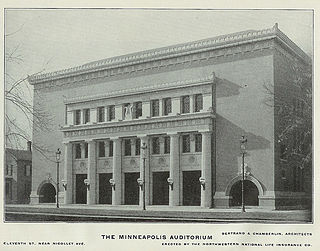
Minneapolis Auditorium was an indoor arena in Minneapolis, Minnesota. It hosted the NBA's Minneapolis Lakers from 1947 until they moved to the Minneapolis Armory in 1959. The arena held 10,000 people and was built in 1927. The building fell into obscurity after the opening of the Met Center in suburban Bloomington. It was demolished in 1988 to make way for the Minneapolis Convention Center.

The El Vernona Hotel–John Ringling Hotel was a famous hotel located at 111 North Tamiami Trail in Sarasota, Florida, United States.

The State Street Bridge, also known as the Soldiers and Sailors Memorial Bridge, is a 1,312-foot (400 m) concrete, deck arch bridge that spans Pennsylvania Route 230 and Paxton Creek in Harrisburg, Pennsylvania. The bridge was completed in 1930 and was intended to be the principal entrance into downtown Harrisburg and the Pennsylvania State Capitol Complex from the east.

Thackeray Hall is an academic building of the University of Pittsburgh and a contributing property to the Schenley Farms National Historic District at 139 University Place on the campus of the University of Pittsburgh in Pittsburgh, Pennsylvania, United States.
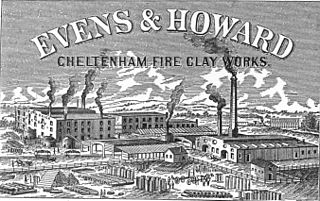
The Evens & Howard Fire Brick Company was a manufacturer of fire bricks, sewage pipe and gas retorts in what is now the Cheltenham neighborhood of St. Louis, Missouri. It was founded formally in 1855 as the Cheltenham Fireclay Works and achieved sales as far away as Quebec and Africa. One source dates the beginning of the company back to 1837, but under different owners. In 1855, the works were owned by Charles Chouteau. The firm was incorporated in 1867 when Evens & Howard took possession of it. At the time of its operation, it was one of the oldest manufacturers of fire bricks in St. Louis. At one point, its grounds covered 133 acres (54 ha). According to one report, the mining was done below ground by "pick and blast". In 1904, clay extraction took place at three mines: two in St. Louis and one in Glencoe, Missouri. The company had an extensive equipment network of cars and tracks to bring clay to the plant. Evens & Howard's offices were located on Market Street in St. Louis.
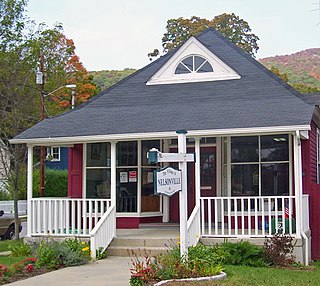
The original Fish and Fur Club building is at Main and Pearl Streets in Nelsonville, New York, United States. It is now used as Nelsonville's village hall. In 1982 it was added to the National Register of Historic Places (NRHP).

The first Lincoln County Courthouse, also known as the Pioche Courthouse and the Old Lincoln County Courthouse, in Pioche, Nevada earned the title "Million Dollar Courthouse" after it cost $75,000 to build in 1872, for a relatively small building. With added costs attributed to finance charges and fiscal mismanagement, the cost in 1872 dollars came to over $800,000. The debt incurred by the county was not retired until 1938, when the new courthouse was under construction.

The Music Hall at Fair Park is a performing arts theater in Dallas, Texas's Fair Park that opened in 1925.
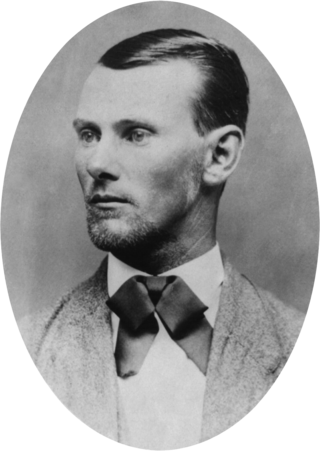
Jesse Woodson James was an American outlaw, bank and train robber, guerrilla and leader of the James–Younger Gang. Raised in the "Little Dixie" area of Western Missouri, James and his family maintained strong Southern sympathies. He and his brother Frank James joined pro-Confederate guerrillas known as "bushwhackers" operating in Missouri and Kansas during the American Civil War. As followers of William Quantrill and "Bloody Bill" Anderson, they were accused of committing atrocities against Union soldiers and civilian abolitionists, including the Centralia Massacre in 1864.
The Plymouth Mail robbery, or what the press dubbed "The Great Plymouth Mail Truck Robbery" was, at the time of its occurrence, the largest cash heist of all time. On August 14, 1962, two gunmen stopped a U.S. Mail truck that was delivering $1.5 million in small bills from Cape Cod to the Federal Reserve Bank in Boston, Massachusetts. The hijacking occurred on Route 3 in Plymouth, Massachusetts. The two robbers, dressed as police officers and brandishing submachine guns, tied up the driver of the truck and the guard and drove the truck themselves to places unknown, where the money was dropped off in several places. The truck and its two tied-up occupants were abandoned in Randolph, Massachusetts, alongside Route 128.

Old Chapel, formerly known as the Old Chapel Library is a former library on the campus of the University of Massachusetts Amherst that is on the National Register of Historic Places.
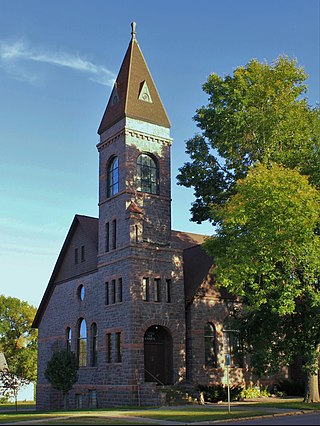
Rock Rapids United Methodist Church, formerly known as First Methodist Church, is located in Rock Rapids, Iowa, United States. The church building is significant for the use of blue-gray and red granite used in its construction. It was designed by Sioux Falls, South Dakota architect Joseph Schwartz utilizing the Richardsonian Romanesque style. Completed in 1896, it is the second church building for a congregation founded in the 1870s. The blue-gray granite quarried near Sioux Falls is the main building material, and it is laid in a random ashlar pattern. The red granite was acquired from the receiver of a bankrupt packing plant which had begun, but did not complete, a new stone building. It is used for the trim, especially in the voussoirs of alternating colors. The building also features a tall corner bell tower. The pipe organ was ordered from the Hinners Organ Company of Pekin, Illinois in January 1905 at a cost of $1,960. An addition was added to the south side of the church in 1966. The church was added to the National Register of Historic Places in 1978.

The Erie County Savings Bank building was a 10-story Romanesque Revival, office and bank branch building that was located at present-day 9 Church Street in downtown Buffalo, New York.
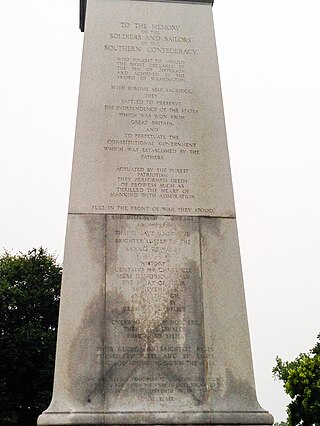
The Memorial to the Confederate Dead is a Confederate memorial in Missouri.





















